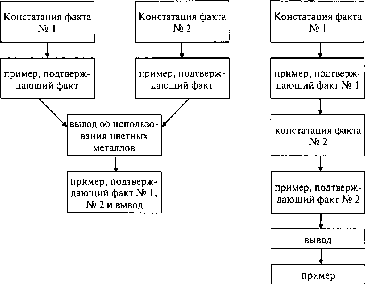В. Н. Бгашев е. Ю. Долматовская английский язык для студентов машиностроительных специальностей учебник
 Скачать 1.36 Mb. Скачать 1.36 Mb.
|
|
TEXT STUDY Изучите таблицу на с. 134. Скажите, какие из ее частей соответствуют той части текста, в которой изложены требования к современным сталям. Постройте аналогичную таблицу для области машиностроения, в которой вы специализируетесь. DISCUSSION Ответьте на следующие вопросы. 1. What are the two drawbacks of modern steel materials? 2. What are the advantages of steel over other metals? 3. In what fields of engineering has steel been long used? 4. What are the modern needs for steel development? 5. How could these needs be met? 6. How have modern steel needs changed in automotive industry? Приготовьте сообщения на следующие темы. Используйте активную лексику раздела. а) Достоинства и недостатки современных конструкционных сталей. б) Требования к современным конструкционным сталям. в) Тенденции в современном развитии сталей. г) Тенденции в развитии сталей в автомобилестроении. Active Vocabulary
в Прочитайте текст и скажите, о чем он. Расшифруйте данные, характеризующие различные материалы. Обратите при этом внимание на размерность: 1) вес; 2) точку плавления; 3) содержание металла в земле, в морской воде. В разделе “Aluminium” сообщается о свойствах чистого алюминия, его сплавов и об улучшении этих свойств в процессе обработки. а) Назовите эти свойства; б) скажите, с какими элементами сплавляется алюминий; в) какие процессы улучшают свойства алюминия и его сплавов. TEXT В. NON-FERROUS METALS Although ferrous alloys are specified for more engineering applications than all non-ferrous metals combined, the large family of non-ferrous metals offers a wider variety of characteristics and mechanical properties. For example, the lightest metal is lithium, 0.53 g/cm3, the heaviest, osmium, weighs 22.5 g/cm3 — nearly twice the weight of lead. Mercury melts at around -38°F, and tungsten, the metal with the highest melting point, liquefies at 6,170°F. Availability, abundance, and the cost of converting the metal into useful forms — all play important parts in selecting a non-ferrous metal. One ton of earth contains about 81,000 g of the most abundant metal of land, aluminium. One ton of sea water, on the other hand, contains more magnesium than any other metal (about 1,272 g). All sources combined, magnesium is the most abundant metal on earth. But because magnesium is difficult to convert to a useful metal, it may cost several times that of the least expensive and most easily produced metal, iron billet. Although nearly 80% of all elements are called “metals”, only about two dozen of these are used as structural engineering materials. Of the balance, however, many are used as coatings, in electronic devices, as nuclear materials, and as minor constituents in other systems. Aluminium Aluminium is lightweight, strong, and readily formable. Aluminium and its alloys, numbering in the hundreds, are available in all common commercial forms. Because of their high thermal conductivity, many aluminium alloys are used as electrical conductors. Commercially pure aluminium has a tensile strength of about 13,000 psi. Cold-working the metal approximately doubles its strength. For greater strength aluminium is alloyed with other elements such as manganese, silicon, copper, magnesium or zinc. Some alloys are further strengthened and hardened by heat treatments. Most aluminium alloys lose strength at elevated temperatures, although some retain significant strength to 500°F. DISCUSSION Изучите схемы и скажите, какая из них точнее передает логику текста. 1. 2.  • Выпишите свойства различных материалов, упоминаемых в тексте.
Ответьте на следующие вопросы. 1. Which of the non-ferrous metals is the most abundant metal on earth? 2. Which is the most abundant metal of land? 3. What factors define the selection of materials? 4. Why is magnesium so expensive? 5. Name the properties of pure aluminium. 6. How are the properties of pure aluminium improved? Step 3 A Бегло прочитайте текст и скажите, в каком абзаце описаны: а) требования к пластмассам; | ||||||||||||||||||||||||||||||||||||||||||||||||||||||||||||||||||||||||||||||
